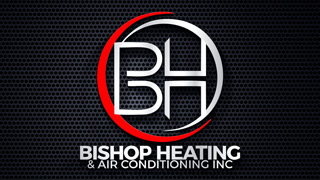It’s always nice when we manage to save money on our utility bills, but it just so happens there’s a way to lower energy use, even when you’re not even home.
The key is your thermostat. By learning more about its special features and settings, you can structure its daily schedule around your personal preferences. This means establishing various temperature settings for when you’re home, away or even when you’re asleep.
By trying a few of these schedules, you’ll be able to enjoy comfortable temperatures while keeping more money in your pocket. Here are some ways your thermostat doesn’t have to use up all your summer spending money:
While at Home
When you’re home, you want comfortable temperatures. It’s only natural to want your thermostat lower in the summer while inside to appreciate the cool air.
But in terms of energy efficiency, the best range for when you’re in your home during the summer is usually between 78 and 80 degrees Fahrenheit. By adjusting things a few degrees, you can stay cool while still keeping your energy bills low.
While Away
When it comes to setting the temperature for a vacation or other trip away from the house, it’s advantageous to set the thermostat higher than normal.
If your home is located somewhere a little cooler, you can set the thermostat to higher temperatures like 88 degrees while no one is home before lowering it back to the sweet spot of 78-80 degrees once you’re home again. This way, your air conditioning unit won’t be working overtime to cool an empty house.
While Asleep
For a full night’s rest during summer weather, you want your thermostat set at a comfortable temperature. You should try and keep things between 68-72 degrees Fahrenheit. You won’t have to worry about getting too hot or too cold at some point overnight.
Other Strategies for Lowering Energy Use:
- Smart thermostat installation: Using a smart thermostat in the summer is an excellent way to reduce energy costs by automatically adjusting to your lifestyle and idea of what comfortable is. They can lower the temperature while you are home or sleeping, before allowing it to warm up when no one is around. Using reputed brands and models such as the Lennox iComfort, you have the ability to remotely access and change the temperature through your smartphone, tablet or laptop. Planning smart thermostat installation in your Bishop home is an effortless way to set the correct temperature whether you’re at home or across the country.
- Replace current equipment with a newer HVAC system: Upgrading your HVAC system can save money in the long run. If a system boasts high energy efficiency, you can also count on lower utility bills since more efficient equipment requires less energy to reach your preferred temperatures. Air conditioning installation in Bishop is a great way to beat the heat in the summer.
- Keep up with AC maintenance: Hiring a skilled professional to perform regular air conditioning maintenance in Bishop can have a significant impact on your utility bills. With regular cleaning of the coils, checking for damage and clearing air vents of dust and debris, this can help your HVAC system perform better during day-to-day use.. Higher energy efficiency will also reduce strain on important or delicate components and lowers operational costs, resulting in lower energy usage and subsequently, smaller bills.
- Clean or replace the air filter on a regular basis: Cleaning or replacing the air filter regularly saves money by improving airflow. When filters become clogged, an AC unit has to work harder, and the strain can reduce the system’s life span and lead to breakdowns.
- Check if you have enough insulation in the attic: Insulation is one of the key components in any energy-efficient home, securing the hot air outside and the cool air inside during the summer. The North American Insulation Manufacturers Association (NAIMA) recommends that homes in the southern United States should have at least 13-14 inches of insulation, while those in northern U.S. states should have 16-18 inches.
- Review your ductwork: Damage to the ventilation is capable of increasing your energy bills much more than 20 percent, plus it can also lead to problems with your water heater, clothes dryer and other appliances to get into the atmosphere of your home. Watching for signs of leaks and sealing them can help with both these issues.
- Seal all other leaky spots in your home: Finding and sealing any remaining leaks in your home with caulk, foam sealant or weather-stripping can help keep it cooler on hot summer days. It’s also important to check for any gaps around windows, doors and even outdoor fixtures. Making time to seal leaks now can help you save a lot in the long term.
